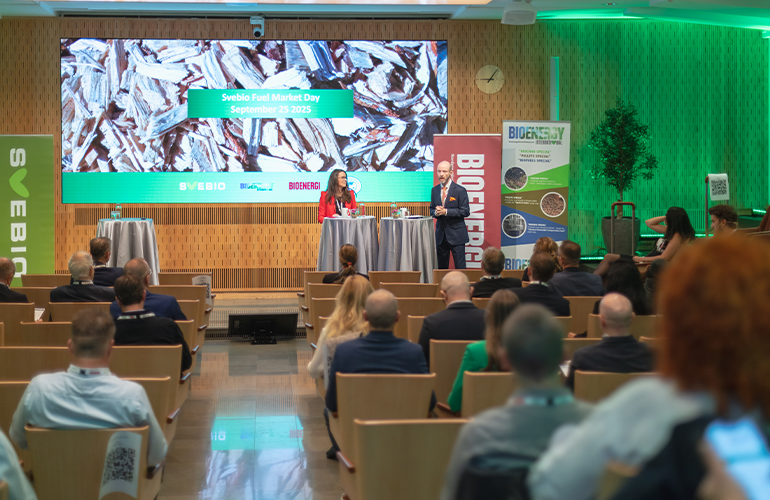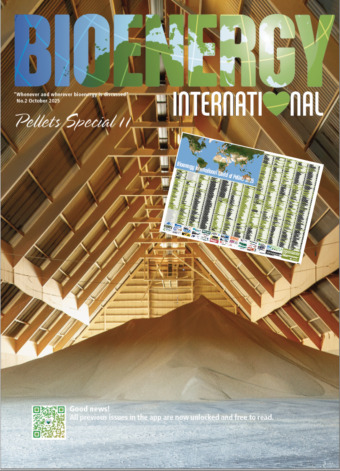On September 25, 2025, Swedish Bioenergy (Svebio) – previously known as the Swedish Bioenergy Association – held its annual Fuel Market Day at the Royal Swedish Academy of Engineering Sciences (IVA) conference venue in central Stockholm. The 8th consecutive edition this year saw a shift in focus, from near-term bioenergy issues to mid- and long-term biomass usage and availability scenarios.
Close to 100 participants, including 17 online delegates, attended the one-day annual event. Traditionally, Svebio’s Fuel Market Day has focused on the latest developments in the solid- and liquid biofuel markets predominantly for the heating and power sectors, ahead of the coming heating season.
This year was somewhat different in that much of the conference discussions seemed to dwell on future (solid) biomass availability and usage with energy – heat and/or power – taking a backseat.
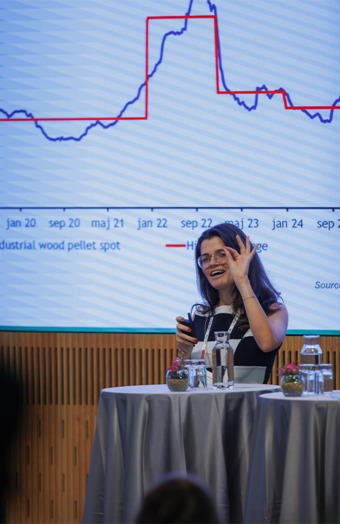
Notable exceptions to this mid-to long-term future view included Argus Media’s Senior Market Reporter Hannah Adler, who provided a comprehensive overview of the European wood pellet market; Bioenergy Europe’s Market Intelligence Director Jérémie Geelen, who vividly illustrated the current challenges in navigating EU policies and regulations affectling bioenergy – EUDR second postphonement a case in point – as did Thomas Siegmund, CEO of the Sustainable Resources Verification Scheme (SURE); while Matti Puuronen, Managing Director of Laania Estonia, and Kjetil Vikingstad, CEO of Geminor both provided candid here-and-now biomass fuel user and supplier perspectives respectively.
From a traditional Fuel Market Day perspective, these were perhaps the most valuable and relevant presentations in terms of topic focus, and ought to have generated numerous queries from moderators and delegates alike.
Especially given the current challenging market situation, public perception of district heating and price hikes.
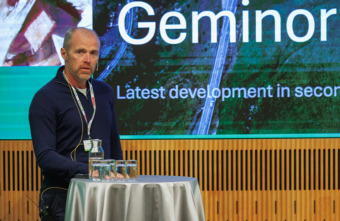
Not to mention possible regional effects on biomass fuel flows once Kraftringen Energi’s second biomass-fired combined heat and power (CHP) plant comes online in 2028.
Some updates on bioenergy with carbon capture and storage (BECCS) projects wouldn’t have been amiss either, nor more commentary on the recently announced “power lift” proposal in the Swedish Government’s 2026 Budget Bill, the final Budget Bill of the incumbents’ current term as Swedes head to the polls in September 2026, just in time for the 2026/2027 heating season.
That is not to say that the other presenters were irrelevant or that their presentations were uninteresting, far from it. They were all ”very interesting”, each one offering unique insights, perspectives, and reflections from a different time horizon than what one was perhaps expecting.
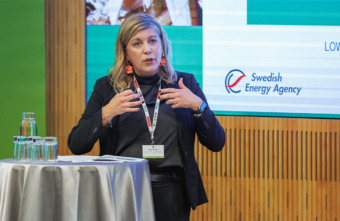
For example, Maria Westrin, Head of Unit Energy Markets at the Swedish Energy Agency, discussed future scenarios of Sweden’s energy systems to 2060.
Westrin cautioned that while no one scenario is ”more right or wrong than another”, new and stricter EU legislation will have a ”major impact on Sweden’s entire energy system, regardless of the scenario.”
That is an absolute certainty, as evidenced by Geelen’s presentation.
Combustion-based district heating and combined heat and power face a challenging transition due to increased competition for biofuels. Bio-based district heating and CHP decrease in all scenarios, Maria Westrin said.
Instead, according to the Agency’s scenarios, biorefineries would seem the biomass feedstock winners, with district heating served through residual process heat extraction from these and other manufacturing facilities.
In essence, an expansion of what already exists in the Nordics today.
Exemplifying all things bio-based, Dr Johanna Mossberg, Head of Bioeconomy Arena at RISE – Research Institutes of Sweden, highlighted that it is all about replacing fossil carbon with green carbon – defossilization, not decarbonization.
Everything fossil could be made biobased, and RISE picks up where photosynthesis ends, remarked Dr Johanna Mossberg as a means of introduction.
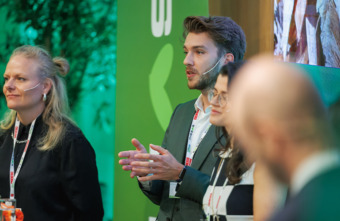
Dr Mossberg noted that, historically, development in the (forest) bioeconomy was linear, focused on increased specialisation of material use, and increased modification of raw materials.
Now, by closing the process and product loops, new value chains are emerging based on the side and residual streams that were previously used or available for energy purposes, leading to increased resource efficiency, reduced climate/environment impact, and improved competitiveness.
While bioenergy and bio-innovation in Sweden are predominantly forest-based, Florian Ilias, Managing Director of Terravesta, made the case with several client references for elephant grass (Miscanthus).
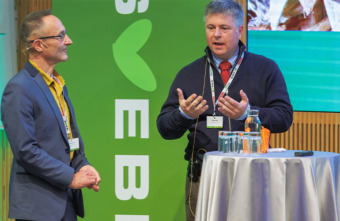
The company is specialised in developing high-yielding, climate-adapted Miscanthus hybrids for industrial use, including energy, and operates across the entire value chain of biomass supply projects from crop selection and establishment, harvesting, and logistics.
Purposely developed for so-called marginal land, i.e., land that for some reason is not suitable for food production, Miscanthus can act as a carbon sink through increasing soil carbon and provide a versatile biomass feedstock without irrigation or fertilizer input.
Given the increased competition, policy, public perception, and regulatory restrictions surrounding biomass, the question arises of how available biomass can be used cost-effectively to achieve emission targets in the European energy system.
RISE Senior Researcher Dr Markus Millinger launched some key findings from research on just that.
The main value of biomass in the energy system is carbon provision for further utilization or negative emissions. Except for some dispatchable back-up power, it is not crucial what the biomass is used for if it is connected to carbon capture, which strongly enhances the value of the biomass, said Dr Millinger, adding that renewable chemicals and liquid fuels are the most challenging part of the energy system.
At the other end of the scale, removing biomass entirely from the European energy system would incur approximately 20 percent higher energy system costs, around EUR 170 billion.
Interestingly, according to Millinger’s research, the cost-optimal level of biomass in the European energy system is around 3,500 TWh per annum, about 29 percent of primary energy consumption of 13 PWh, with the balance made up of the other renewables in a fully sector-coupled energy system.
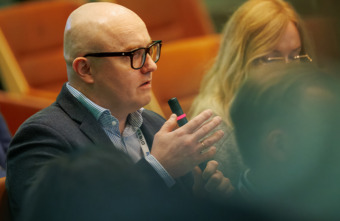
This represents approximately double the current (2021) total primary usage of solid biomass, just under 1,3,00 TWh, suggesting scope for expansion from an energy system perspective – biorefineries, perhaps, as previous speakers highlighted. On the other hand, capping biomass to current usage in the energy system equates to about 5 percent higher system costs.
Furthermore, Dr Millinger’s research emphasizes how biomass usage in the energy system is linked to carbon capture, bioenergy with carbon capture, and the biogenic carbon dioxide (bioCO2) used and/or sequestered strongly enhances carbon efficiency and value of the biomass.
Around 900 million tonnes of bioCO2 capture is cost-optimal, which is 21 percent of total European greenhouse gas (GHG) emissions in 2021. Conversely, excluding carbon capture from bioenergy leads to a 13 percent higher energy system cost.
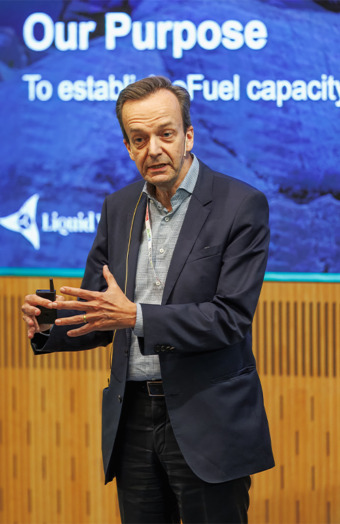
Illustrating the bioenergy with carbon capture and utilization (BECCU) opportunity, Claes Fredriksson, CEO and Founder of power-to-X (PtX) company Liquid Wind, argued for electro-methanol (e-methanol).
As a platform chemical and fuel, methanol is one of the world’s most traded chemical commodities, but is typically produced from the gasification of coal or steam reforming of methane (fossil natural gas); thus, it has a high environmental impact and climate footprint.
By co-locating with biomass-fired combined heat and power plants, Liquid Wind can utilize the bioCO2 to produce green methanol, while supplying residual heat from the electrolysis step back into the district heating system.
The company currently has four projects in Sweden and two in Finland – all with bioenergy and/or waste-to-energy (WtE) plants – in various stages of project development.
Each is based on a standardized and modular design to utilise 150,000 tonnes of bioCO2 per annum to produce 100,000 tonnes of e-methanol.
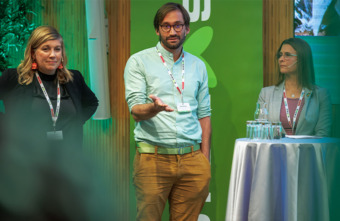
While Maira Saxe, Director of Sustainability, Stora Enso Skog, the Swedish forestry arm of global forest industry major Stora Enso, focused her presentation on forests, forest management, sustainability, and EU policy and regulatory incongruencies, she too remarked that “everything that’s made from fossil-based materials today can be made from a tree tomorrow” in her introduction of Stora Enso as a company.
As biomass producers and users, it would seem obvious that the forest industry, and for that matter, the agri-food complex, are both in a poll position, with the potential to deliver on all of the above presented and discussed. Indeed, some in the latter sector are already doing so – the European ethanol industry and the European biogas industry.
Be all that as good as it may, at the end of Fuel Market Day 2025, one was really not too much the wiser on what might be issues on the horizon for heating season 2025/2026.


